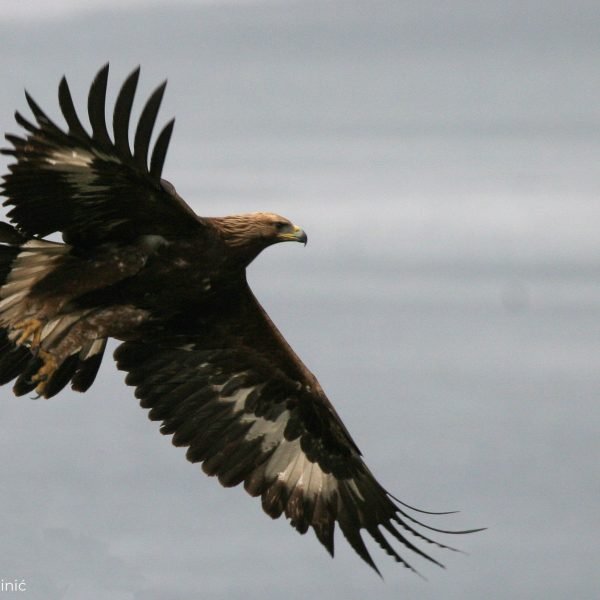A complex geomorphology of the terrain, diverse climate conditions from sub-Mediterranean to Arcto-Alpine climate, resulted in a creation of diversity of living communities with rich flora, dense vegetation and presence of various animal lives.
Flora
The massif of Albanian Alps (hereinafter Prokletije Mountains) is considered to be the richest mountain in the Balkans as far as flora and vegetation is concerned. Similar to botanical garden, almost 2000 different species are found here, with that endemic, endemic-relict, relict, rare species being the most important ones. Also, there are countless species including medicinal plants, aromatic, and honey – based and self – growing eatable plants.
According to the Decision of the Republic of Montenegro Agency for Environment Protection, 60 out of 415 protected plant species in Montenegro can be found in Prokletije Mountains). Some of the most beautiful and significant species include Balkan maple (Acer intermedium), Wulfenia (Wulfenia blecic), leontopodium (Leontopodium alpinum), valeriana, (Valeriana pancicii), silene macrantha, etc.
Forests represent the most important economic and tourist resource. They are priceless source of aesthetical values and irreplaceable factors in terms of the environment protection. The coniferous forests are the most attractive ones, dominated by unique relict type of Macedonian pine tree (Pinus peuce) and white-bark pine tree (Pinus heldreichii). Most typical and perhaps, best quality types of these forests in the Balkan Peninsula can be found in the Prokletije mountains.
Macedonian and white-bark pine trees in Prokletije Mountain sites can be found in pure and mixed combinations, with spruce and beech in upper parts of forest vegetation. The Macedonian pine tree can be found at 1000 meters altitude to over 2000 meters altitude, while the white-bark pine trees can be found from 1700 meters to 2000 meters altitude. These forests comprise of rainforest elements and thus represent true and genuine flora rarity.
Fauna (Animal Life)
The Prokletije Mountains abound in rich and diverse fauna of mammals, birds, fishes, amphibians and invertebrates. Many among them are protected by the existing law. Characteristic representatives of insects include forest ant (Formica rufa), stag beetle (Lacanus cervus), butterflies, that is, Apollo butterfly (Paranassius apollo) and the common yellow swallowtail (Papilio machaon).
The Prokletije Mountains represent the most significant center of herpetofauna diversity (herpetology). Largest populations of mountain murmur can be found in certain locations. Nine out of forty types of amphibians and reptiles are endemic in a wider area of the Prokletije Mountains. Species such as spiny toad (Bufo bufo), European green toad (Bufo viridis); including our smallest tree frog (Hyla Arborea) while both sort of mountain murmur (small and mountain Triturus vulgaris, T. Alpestris) live in mountainous lakes, swamps and puddles.
Birds are the most endangered and the most sensitive group of animal life species at global level. Good conditions for ornitofauna resulted in rich and diverse bird fauna. Until present, 161 types of birds have been registered in the Prokletije Mountains area. Twenty more types can be added to the list, so we may therefore conclude that the Prokletije Mountains area are probably the richest massif as far as ornithofauna in Montenegro is concerned. There are sea basses, grebes, cormorants, herons, bobbers, hawks, falcons, cocas, pine cocas, buzzing birds, snipes, seagulls, cuckoos, owls, chips, goldfinches, woodpeckers, swallows, larks, crows, etc.
There is also a significant number of the following species including black – throated divers, grebes, cormorants, herons, ducks, gadwalls, goshawks, hawks, moorhens, common moorhens, plovers, woodcocks, gulls, cuckoos, owls, fern owls, nightjars, swifts, rollers, halcyons, kingfishers, rudbeckia, woodpeckers, swallows, skylarks, yellow wagtails, shrikes, golden orioles, starlings, crows, etc.
The mammals’ fauna includes local bear kind (Ursus arctos), fox (Vulpes vulpes) and wolf (Canis lupus) as they are considered very common animals in this particular area. Roe deer (Capreolus capreolus) is very rare; chamois (Rupicapra rupicapra) is a common animal for this area, as wild pig (Sus scrofa) and rabbit (Lepus europeus). Small mammals occupy this particular area including: common shrew (Sorex araneus), alpine shrew (Sorex alpinus), water shrew (Neomys fodiens), swamp shrew (Neomys anomalus), small mole (Talpa coeca).All of these are internationally protected species.










